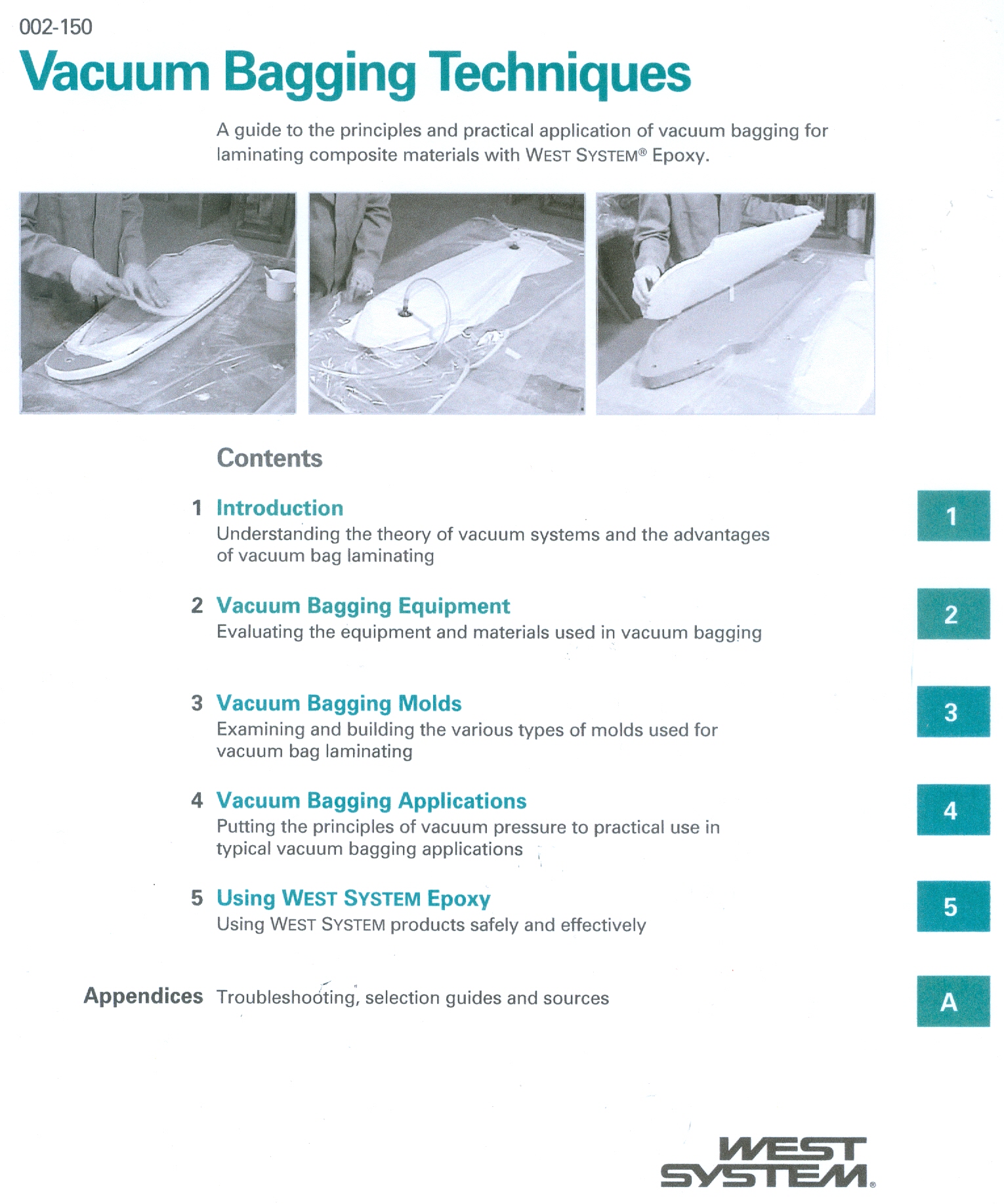 |
This is a nice, inexpensive, complete paper bound
book. The illustrations are very clear and the techniques are laid out practically without
hype. Information is introduced as needed for understanding and practical use but is not
used just to impress the reader with a flood of graphs and data. I notice that in section 2.1.4 on vacuum Pump Selection they mention that a "higher …. rated pump will be required if you need more clamping pressure to force laminations to conform to a more complex mold shape. Curved or compounded mold shapes and/or lamination of many stiff veneers or core materials may require at least …." I am sure they are quite accurate here. However as a practical shop matter it has been our experience that while you want the pump specified all right you also want to go back and re-engineer so that it takes absolutely as little pressure as possible to push any layers that have any "spring back" to them. In other words if using thinner material in more layers will result in less required pressure, do it. We have seen a notable lack of success in trying to using springy materials in vacuum bagging in several shops. Generally, if the stuff doesn't lie naturally close to the curve it needs to, you probably need to rethink your laminate. In section 2.2.1 Release fabric I do think some mention should be made that there have been a number of cases where it seems that the use of these coated fabrics may leave a residue that interferes with subsequent bonding operations. Therefore I would suggest that careful tests be conducted before using release fabrics in contact with your laminate in a finished product. In section 3.3 Building a Master Plug it is suggested that the plug be built to a 1/4" tolerance with a heavy layer of fairing compound used to get the final shape. Most people are going to find it a great deal less work to make the plug to much finer tolerances than this and use only the minimum fairing that you would use in finishing up any surface. Since most plugs are made of wood you might as well take advantage of the natural ease of fairing inherent in the wood and get just as close to the final surface as you can before you use any fairing compound for final smoothing. The above comments are pretty much "nit picking" and amount to things I think of when reading the book. This is the best practical manual on vacuum bagging that I know of. 52 pages, profusely illustrated, emailed in pdf format. The charge shown is for the time to attach the file to an email to you. $7.50 Contents Section 1 Introduction |